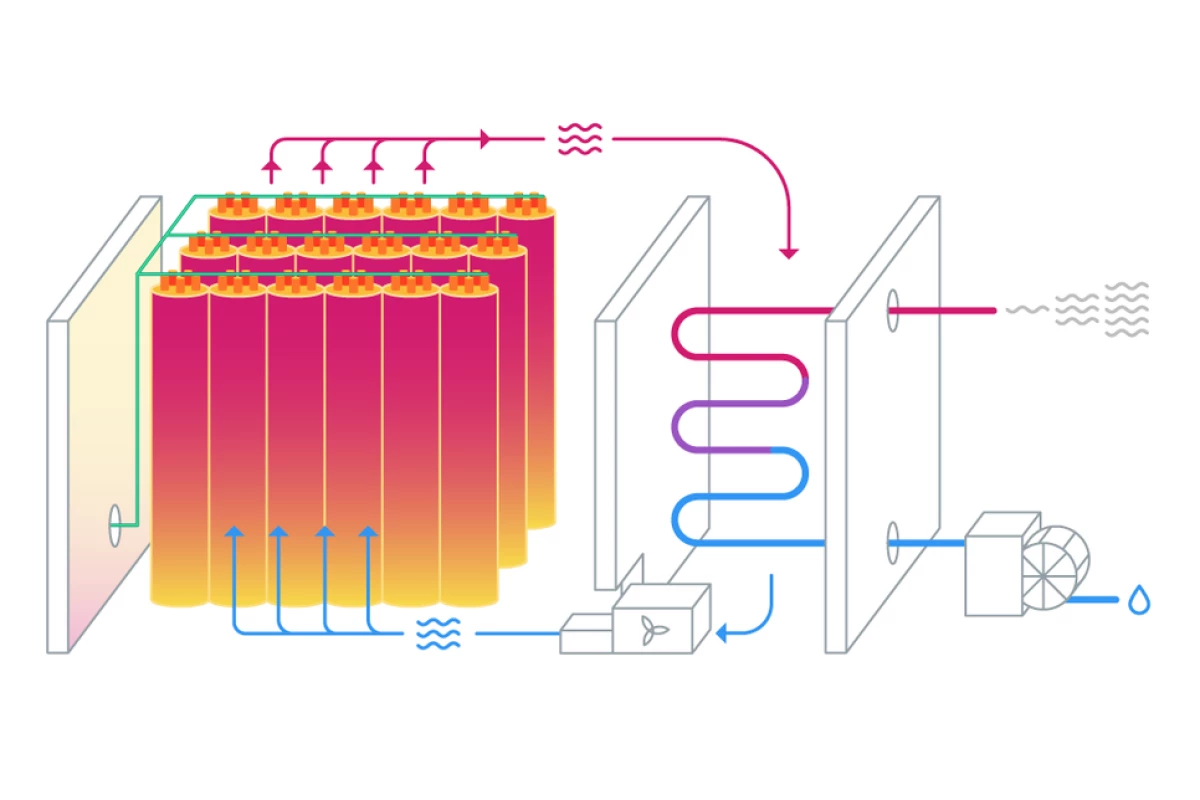A quarter of humanity's carbon emissions come from industrial energy use – and a huge portion of that energy goes into creating heat for various processes. And right there lies a slam-dunk decarbonization opportunity that'll pay for itself incredibly quickly, reasons Oakland company Rondo Energy.
"We're at a spectacular moment in history," Rondo CEO John O'Donnell told the Wharton Current podcast. "Where on a per unit of energy cost basis, wind and solar power are cheaper than fuels. Not just cheaper than conventional electricity, but cheaper than fuel for heat in most of the world – headed for all of the world."
In other words, thanks to a huge crash in the price of renewable energy, there's no longer a "green premium" stopping most industrial heat consumers from decarbonizing and switching to clean solutions. The barrier, instead, is intermittency; you can buy renewable energy out of the grid at extremely low cost, right now – but only when the solar arrays are producing too much for the grid to use. You can't run your factory 24/7 that way unless you can store that energy up.

And here's Rondo's play: this company is building "brick toasters" that store up cheap renewable energy as high-temperature heat, ready to be deployed throughout the day – and it says industrial clients will begin saving money compared to their old, dirty, fossil-fuel burning processes immediately.
At the heart of it, this ain't rocket surgery; converting electricity into heat is something that happens at 100% efficiency every time you turn on your toaster or hairdryer, says O'Donnell. Rondo uses a simple toaster-style system to heat up "blast stoves," similar to the ones the steel industry already uses for cyclical heat storage. These stoves are full of plain ol' bricks, made out of plain ol' clay, sometimes with a bit of sand in there, but certainly nothing special in terms of materials. Nothing toxic, nothing that decays over time. These bricks will still be storing heat just as well in 40 or 50 years' time, when chemical batteries have gone through several generations of complex recycling.
Rondo says it can pull that heat back out at an extraordinary 98% efficiency, resulting in a dirt-cheap industrial heat storage solution that costs "about one fifth the cost per unit of energy stored as any electrochemical battery," according to O'Donnell. "On the outside, it looks fairly boring. It's only possible today because of supercomputer computational fluid dynamics, and finite element analysis and AI system controls. We're building something that's very simple – but was very interesting and complicated to design."

The first generation of Rondo brick toasters are optimized for low cost, super-fast deployment and scale, and are capable of holding heat up to 1,500 °C (2,732 °F), which O'Donnell says can cover approximately 80% of industrial heat requirements globally. Down the track, using more expensive heaters and brick materials chosen for the purpose, he says it's possible to hit 1,800 °C (3,272 °F) or so, which brings steelmaking into range, and would cover somewhere around 92% of industrial use cases.
"The couple of years of science and investigation are behind us, and we are right now making the journey from the labs, through late-stage prototypes, to our first customer installations this year with a goal of being at very large scale next year in the year beyond," said O'Donnell. "And we're looking very hard at the project finance community and the pathways that enable scaling the fastest."
Rondo's first customers, he says, have zero interest in being "green" or advertising their decision. They're in this for the bottom line, taking advantage of the arbitrage opportunity that intermittent clean energy presents. And right now, it's a hell of an arbitrage opportunity. "Today, electricity through a Rondo unit driving an industrial process in Saudi Arabia is one half the cost of oil-fired heat... straight up economics, solar PPA prices vs fuel prices," he said.

On the other hand, arbitrage only works where a supply/demand imbalance exists. If Rondo's idea kicks off at large scale, industrial demand for intermittent renewable energy could skyrocket, turning price dynamics upside down. But O'Donnell says this works out to be a good thing. An entirely new sector coming from fossil fuels into the electricity market, offering to buy enormous amounts of power exactly when the rest of the grid doesn't want it? "This is a class of load that will make new renewable projects more profitable," he says. "And for industrials, it's a chance to lock in long-term energy supply costs, where today they have to be price takers."
The company has investment on board already, including Bill Gates's Breakthrough Ventures. "Breakthrough have tremendous technical depth," said O'Donnell. "They do sector analysis, they make multiple bets in sectors they consider to be critically transformative. They don't invest in anything that isn't going to deliver at least a 1% reduction in world emissions. And by the way, on our rollout, we think we hit 1% of world emissions in under a decade, and 15% in 15 years. Which sounds nuts, until you look at the scope of the demand, the availability of the primary materials. And you know, if we're even half right, the economics are overwhelming."
It's a fascinating story, and certainly a compelling one. A relatively simple technology, built with some metal, dirt and clay. A battle-hardened CEO with multiple exits behind him, no stranger to clean energy, looking some of the most tech-savvy investors in the world in the eye, with a straight face, and convincing them his little brick toasters have the genuine potential to single-handedly reduce global carbon emissions by 15%.
Honestly, it's hard to think of any green technology we've ever covered here at New Atlas that would dare to aim so high. And it's a brick toaster. The way O'Donnell describes the company's plans, it's nigh-on blitzkrieg, with everything focused on speed, scale and low cost. Go get 'em, team.
Source: Rondo Energy/the Wharton Current podcast








